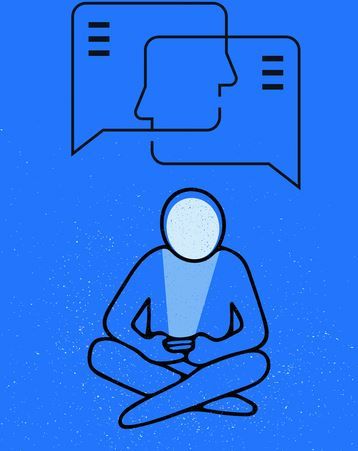Publication
Article
Psychiatric Times
Contemporary ECT for Depression Part 1: Practice Update
Author(s):
This review covers recent advances in ECT technique, post-ECT management, and theories of mechanism of action. It will focus on the use of ECT in depression, the most common indication for ECT in clinical practice.
[[{"type":"media","view_mode":"media_crop","fid":"32074","attributes":{"alt":"","class":"media-image media-image-right","id":"media_crop_1540772424833","media_crop_h":"0","media_crop_image_style":"-1","media_crop_instance":"4028","media_crop_rotate":"0","media_crop_scale_h":"125","media_crop_scale_w":"106","media_crop_w":"0","media_crop_x":"0","media_crop_y":"0","style":"float: right;","title":" ","typeof":"foaf:Image"}}]]Electroconvulsive therapy (ECT) remains an indispensable part of the treatment armamentarium in psychiatry.1 In recent decades, technical advances have made ECT safer and better-tolerated while its well-known effectiveness has been maintained. Ongoing research into the mechanism of action of ECT has led to better understanding of its effects on brain physiology. The explosion of interest in other brain stimulation technologies-primarily repetitive transcranial magnetic stimulation-has yet to produce an alternative clinically viable treatment for the seriously ill population for whom ECT is an appropriate choice; there is still no other equally effective therapy for our most severely ill patients.
This review covers recent advances in ECT technique, post-ECT management, and theories of mechanism of action. It will focus on the use of ECT in depression, the most common indication for ECT in clinical practice.
Electrode placement
Three electrode placements have become standard in contemporary ECT practice: bitemporal (bilateral), right unilateral, and bifrontal. A body of clinical trial evidence suggests that, overall, bilateral placement is somewhat more effective and provides quicker response, while unilateral placement results in fewer cognitive effects.2
In the early decades of ECT practice, standard electrode placement was bilateral. Modifications to this technique were introduced in an effort to decrease the adverse effect of memory loss, based on the theory that the electrical stimulus should not be passed directly through the dominant hemisphere for language. Research in the 1950s demonstrated that therapeutic efficacy with unilateral electrode placement was similar to that with bilateral placement but with less cognitive impairment. Modern studies by Sackeim and colleagues3 and McCall and colleagues4 introduced the concept that the antidepressant efficacy of right unilateral ECT is sensitive to stimulus dosing.
The theory underlying the development of bifrontal placement was that concentrating electrical current in the frontal rather than the temporal lobes would result in less cognitive impairment. A comprehensive meta-analysis of the literature on bifrontal electrode placement concluded that the overall efficacy of bifrontal placement is similar to that of bitemporal and unilateral placements, assuming adequate stimulus dosing for unilateral.5
A large multisite study that compared unilateral, bitemporal, and bifrontal placements found equivalent efficacy and no cognitive advantage for bifrontal placement, although the latter finding is at odds with earlier studies.6 Thus, there currently is no compelling reason to favor bifrontal placement for treatment of depression. However, it remains in widespread clinical use, partly because it is easier to perform technically. Henceforth in this review, “bilateral” refers to bitemporal placement only.
Because there is considerable variation in clinical presentations and patient response (both antidepressant response and sensitivity to cognitive and other adverse effects) there is no single “best” electrode placement for all. In general, the more severely and urgently ill a patient is, the more likely he or she is to be treated initially with bilateral electrode placement. Conversely, the more concerned a patient is about adverse cognitive effects, the more likely he is to be treated initially with right unilateral placement. Patients who do not show adequate response to unilateral elec- trode placement should generally be crossed over to bilateral electrode placement after approximately 6 treatments.7
Stimulus dosage
Modern ECT electrical stimuli consist of a series of brief pulses of electricity generated by the ECT device and delivered through the electrodes (either metal or disposable adhesive) placed on the scalp. The total amount of electricity (stimulus dose) can be increased or decreased by manipulation of the following parameters:
• Duration of each pulse (pulse width) in milliseconds
• Total duration of the pulse train in seconds
• Frequency of pulses in hertz (cycles per second, 2 consecutive pulses constituting a “cycle”)
• Current of each pulse (in milliamps)
The total amount of electrical charge delivered to the patient can be quantified in units of millicoulombs, conceptually analogous to a dose of a medication in milligrams. The minimum charge necessary to elicit a seizure varies from patient to patient and is termed the “seizure threshold.” It can be determined at the first session in a course of treatments, by starting with a low setting on the ECT device and re-stimulating the patient at progressively higher doses until a seizure ensues (dose titration).
With unilateral placement, the degree to which electrical dose exceeds initial seizure threshold at subsequent treatments correlates with antidepressant outcome and cognitive effects. Doses in the range of 6 times seizure threshold and higher have demonstrated efficacy equal to that of bitemporal placement.4 Clinical data also show that cognitive effects increase as the electrical dose increases, for both unilateral and bilateral placements. In current practice, using dose titration, at the second treatment and beyond, a multiple of the initial threshold stimulus is used to elicit seizures, typically approximately twice seizure threshold for bilateral or approximately 6 times threshold for right unilateral electrode placement. Ongoing research will likely clarify whether this approach to stimulus dosing is optimal or whether more nuanced, or different, approaches will yield even better efficacy and tolerability.
Stimulus parameter configuration
Manipulations of individual stimulus parameters may affect therapeutic and cognitive outcomes in ECT, independent of total electrical dose. The necessary pulse width to depolarize neurons is much shorter than that traditionally used on ECT devices, which is in the range of 0.5 to 1.5 milliseconds. Sackeim and colleagues8 randomly assigned depressed patients to ultrabrief (0.3 millisecond) or brief (1.5 milliseconds) pulse stimuli. Electrode placement was further randomized to unilateral at 6 times threshold or bitemporal at 2.5 times threshold. Remission rates were approximately 70% for all groups except bitemporal ultrabrief pulse, which unexpectedly had very low efficacy. Cognitive adverse effects were markedly reduced in the ultrabrief pulse width groups.
Response/remission rates have varied considerably in other studies of depressed patients treated with right unilateral ultrabrief pulse ECT.9 In contrast to the findings of Sackeim and colleagues,8 other data indicate approximately equal memory performance for brief and ultrabrief pulse width right unilateral placement.10 Thus, it is still unclear whether the ultrabrief technique truly provides a cognitive advantage over standard pulse width unilateral treatment. Enthusiasm in the ECT community for right unilateral ultrabrief pulse technique has grown, and it is now commonly used.
Augmenting ECT with antidepressant medications
A common clinical question is whether to use antidepressant medications concomitantly with ECT. Although several early studies found no advantage to adding the medications, Lauritzen and colleagues11 found that the addition of imipramine to acute ECT, vis-Ã -vis paroxetine or placebo, resulted in lower posttreatment depression ratings.
Sackeim and colleagues12 randomly assigned patients to receive concomitant placebo, venlafaxine, or nortriptyline along with ECT. Both antidepressants improved remission rates compared with placebo; nortriptyline was slightly better than venlafaxine. Interestingly, anterograde and retrograde amnesia were less severe with nortriptyline than with venlafaxine or placebo. Thus, the two most methodologically sound studies of concomitant antidepressant medications indicate that a TCA may enhance acute response rates with ECT.11,12
Choice of anesthetic agent
The ultrashort-acting barbiturate methohexital remains the anesthetic agent of choice in ECT because of its overall profile of characteristics that include predictable dosing, rapid onset, brief duration, only moderate anticonvulsant effect, and low cost. Alternative agents include propofol, thiopental, etomidate, and ketamine.
Ketamine is an older anesthetic medication that has generated enormous interest in psychiatry of late because of its intrinsic antidepressant activity. Several randomized comparative trials have assessed ketamine in ECT, either as the primary anesthetic agent or as augmentation to another agent. Loo and colleagues13 reported that 0.5 mg/kg of ketamine added to thiopental as the primary anesthetic agent resulted in an early greater drop in depression scores than thiopental plus placebo, but the effect was small clinically and not sustained.
In a similar study, Abdallah and colleagues14 used thiopental for ECT anesthesia supplemented with placebo or 0.5 mg/kg of ketamine and found no difference in depression outcome ratings. Okamoto and colleagues15 used ketamine 0.8 mg/kg or propofol for ECT anesthesia and monitored depression ratings. They reported slightly faster antidepressant response with ketamine but equal outcomes with propofol after 8 treatments.
Rasmussen and colleagues16 randomized patients to anesthesia with approximately 1 mg/kg of ketamine or methohexital and found no advantage of ketamine. Yoosefi and colleagues17 did find slightly lower depression rating scale scores with ketamine than with thiopental anesthesia after the first treatment, but not later in the treatment course.
To date, the studies of ketamine for ECT anesthesia are mixed, and even those finding an advantage found this only in the first few days of treatment. A recent meta-analysis of studies of adjunctive ketamine in ECT (N = 182 patients) found no antidepressant advantage but higher rates of confusion, disorientation, and prolonged delirium.18 Given this added adverse effect, ketamine is not recommended for routine ECT anesthesia but may still have a role in select patients for seizure enhancement or antidepressant augmentation.
Post-ECT management
After a successful course of ECT, patients should receive continuation or maintenance treatment to prevent relapse. Maintenance treatment may include pharmacotherapy, additional ECT, and psychotherapy.
Post-ECT relapse rates have increased in recent years, perhaps because ECT is often delayed until patients have remained ill for long periods and exhibited treatment resistance to multiple medication trials. Approximately half of ECT-treated patients given continuation pharmacotherapy will remain well for 1 year.
Findings indicate that monotherapy, with either a TCA or an SSRI, reduces relapse rates. An antidepressant is typically started during or after a course of ECT with the anticipation that it will provide some protection against post-ECT relapse, despite the fact that it, or similar agents, may not have been successful in inducing remission for the current episode. The evidence for any specific antidepressant is limited, thus an agent may be selected because it was not yet tried during the current episode or because it was well tolerated and may have provided some symptomatic improvement.
Combination pharmacotherapy- often an antidepressant and mood stabilizer-has been shown to reduce post-ECT relapse more than antidepressant monotherapy. The combination of nortriptyline and lithium was associated with a 30% to 40% relapse rate at 6 months.19,20 A recent study suggests comparable efficacy and tolerability of lithium/nortriptyline and lithium/venlafaxine combinations.21
Lithium alone or in combination has been shown to be effective in post-ECT relapse prevention, although the details of optimal lithium use for this indication remain to be elucidated and practitioners are reluctant to prescribe it. Other medication classes, particularly atypical antipsychotics, or combinations of medications are often used clinically after successful ECT. However, the evidence base supporting the efficacy of these practices is very small.
Maintenance ECT is usually reserved for patients with a history of multiple depressive relapses or particularly severe illness. Patients typically receive a single treatment, often as an outpatient, at an interval of between 1 and 5 weeks. The schedule is flexible and tailored to the needs of the patient, with the goal of providing relapse protection with the fewest possible treatments.
The need for ongoing ECT should be reassessed at intervals (eg, every 3 or 6 months); a small cohort of severely ill patients may need maintenance ECT indefinitely. The practice of tapering an acute ECT course, rather than stopping it abruptly, has been suggested as a relapse prevention strategy; data from the recently completed Prolonging Remission in Depressed Elderly (PRIDE) study should help to confirm or deny this (ClinicalTrials.gov Identifier: NCT01028508).
There is currently little evidence to support psychotherapy as post-ECT maintenance, although a recent randomized trial that included cognitive-behavioral therapy (CBT) plus antidepressant medication showed a protective effect for CBT.22
Contemporary ECT practice has evolved such that ECT today is a remarkably safe and effective treatment for severe depression. Its tolerability continues to be improved by refinements in technique. Clinical strategies for relapse prevention are helping patients stay well longer. Such advancements, coupled with better understanding of ECT’s mechanism of action (see Part 2 of this review in a future issue), will help to de-stigmatize this very important treatment in psychiatric medicine.
Disclosures:
The authors report no conflicts of interest concerning the subject matter of this article.
References:
1. Fink M. Electroconvulsive therapy resurrected: its successes and promises after 75 years. Can J Psychiatry. 2011;56:3-4.
2. Kellner CH, Tobias KG, Wiegand J. Electrode placement in electroconvulsive therapy (ECT): a review of the literature. J ECT. 2010;26:175-180.
3. Sackeim HA, Prudic J, Devanand DP, et al. A prospective, randomized, double-blind comparison of bilateral and right unilateral electroconvulsive therapy at different stimulus intensities. Arch Gen Psychiatry. 2000;57:425-434.
4. McCall WV, Reboussin DM, Weiner RD, Sackeim HA. Titrated moderately suprathreshold vs fixed high-dose right unilateral electroconvulsive therapy: acute antidepressant and cognitive effects. Arch Gen Psychiatry. 2000;57:438-444.
5. Dunne RA, McLoughlin DM. Systematic review and meta-analysis of bifrontal electroconvulsive therapy versus bilateral and unilateral electroconvulsive therapy in depression. World J Biol Psychiatry. 2012;13:248-258.
6. Kellner CH, Knapp R, Husain MM, et al. Bifrontal, bitemporal and right unilateral electrode placement in ECT: randomised trial. Br J Psychiatry. 2010; 196:226-234.
7. Lapidus KA, Kellner CH. When to switch from unilateral to bilateral electroconvulsive therapy. J ECT. 2011;27:244-246.
8. Sackeim HA, Prudic J, Nobler MS, et al. Effects of pulse width and electrode placement on the efficacy and cognitive effects of electroconvulsive therapy [published correction appears in Brain Stimul. 2008;1(3):A2]. Brain Stimul. 2008;1:71-83.
9. Loo CK, Sainsbury K, Sheehan P, Lyndon B. A comparison of RUL ultrabrief pulse (0.3 ms) ECT and standard RUL ECT. Int J Neuropsychopharmacol. 2008;11:883-890.
10. Spaans HP, Verwijk E, Comijs HC, et al. Efficacy and cognitive side effects after brief pulse and ultrabrief pulse right unilateral electroconvulsive therapy for major depression: a randomized, double-blind, controlled study. J Clin Psychiatry. 2013;74:e1029-e1036.
11. Lauritzen L, Odgaard K, Clemmesen L, et al. Relapse prevention by means of paroxetine in ECT-treated patients with major depression: a comparison with imipramine and placebo in medium-term continuation therapy. Acta Psychiatr Scand. 1996; 94:241-251.
12. Sackeim HA, Dillingham EM, Prudic J, et al. Effect of concomitant pharmacotherapy on electroconvulsive therapy outcomes: short-term efficacy and adverse effects. Arch Gen Psychiatry. 2009;66:729-737.
13. Loo CK, Katalinic N, Garfield JB, et al. Neuropsychological and mood effects of ketamine in electroconvulsive therapy: a randomised controlled trial. J Affect Disord. 2012;142:233-240.
14. Abdallah CG, Fasula M, Kelmendi B, et al. Rapid antidepressant effect of ketamine in the electroconvulsive therapy setting. J ECT. 2012;28:157-161.
15. Okamoto N, Nakai T, Sakamoto K, et al. Rapid antidepressant effect of ketamine anesthesia during electroconvulsive therapy of treatment-resistant depression: comparing ketamine and propofol anesthesia. J ECT. 2010;26:223-227.
16. Rasmussen KG, Kung S, Lapid MI, et al. A randomized comparison of ketamine versus methohexital anesthesia in electroconvulsive therapy. Psychiatry Res. 2014;215:362-365.
17. Yoosefi A, Sepehri AS, Kargar M, et al. Comparing effects of ketamine and thiopental administration during electroconvulsive therapy in patients with major depressive disorder: a randomized, double-blind study. J ECT. 2014;30:15-21.
18. McGirr A, Berlim MT, Bond DJ, et al. A systematic review and meta-analysis of randomized controlled trials of adjunctive ketamine in electroconvulsive therapy: efficacy and tolerability. J Psychiatr Res. 2015;62:23-30.
19. Sackeim HA, Haskett RF, Mulsant BH, et al. Continuation pharmacotherapy in the prevention of relapse following electroconvulsive therapy: a randomized controlled trial. JAMA. 2001;285:1299-1307.
20. Kellner CH, Knapp RG, Petrides G, et al. Continuation electroconvulsive therapy vs pharmacotherapy for relapse prevention in major depression: a multisite study from the Consortium for Research in Electroconvulsive Therapy (CORE). Arch Gen Psychiatry. 2006;63:1337-1344.
21. Prudic J, Haskett RF, McCall WV, et al. Pharmacological strategies in the prevention of relapse after electroconvulsive therapy. J ECT. 2013;29:3-12.
22. Brakemeier EL, Merkl A, Wilbertz G, et al. Cognitive-behavioral therapy as continuation treatment to sustain response after electroconvulsive therapy in depression: a randomized controlled trial. Biol Psychiatry. 2014;76:194-202.
Newsletter
Receive trusted psychiatric news, expert analysis, and clinical insights — subscribe today to support your practice and your patients.






